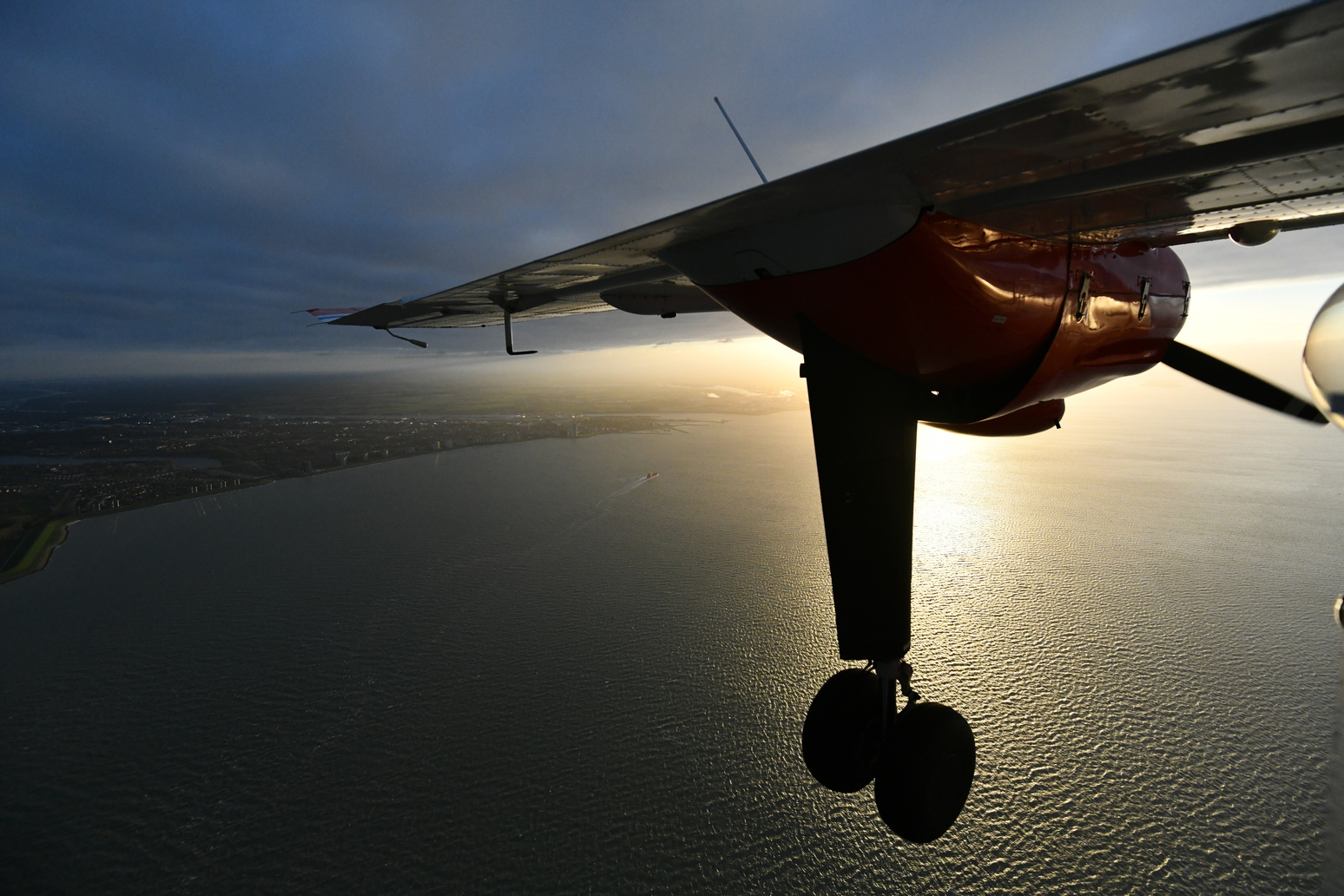Aerial observations over the North Sea in 2023
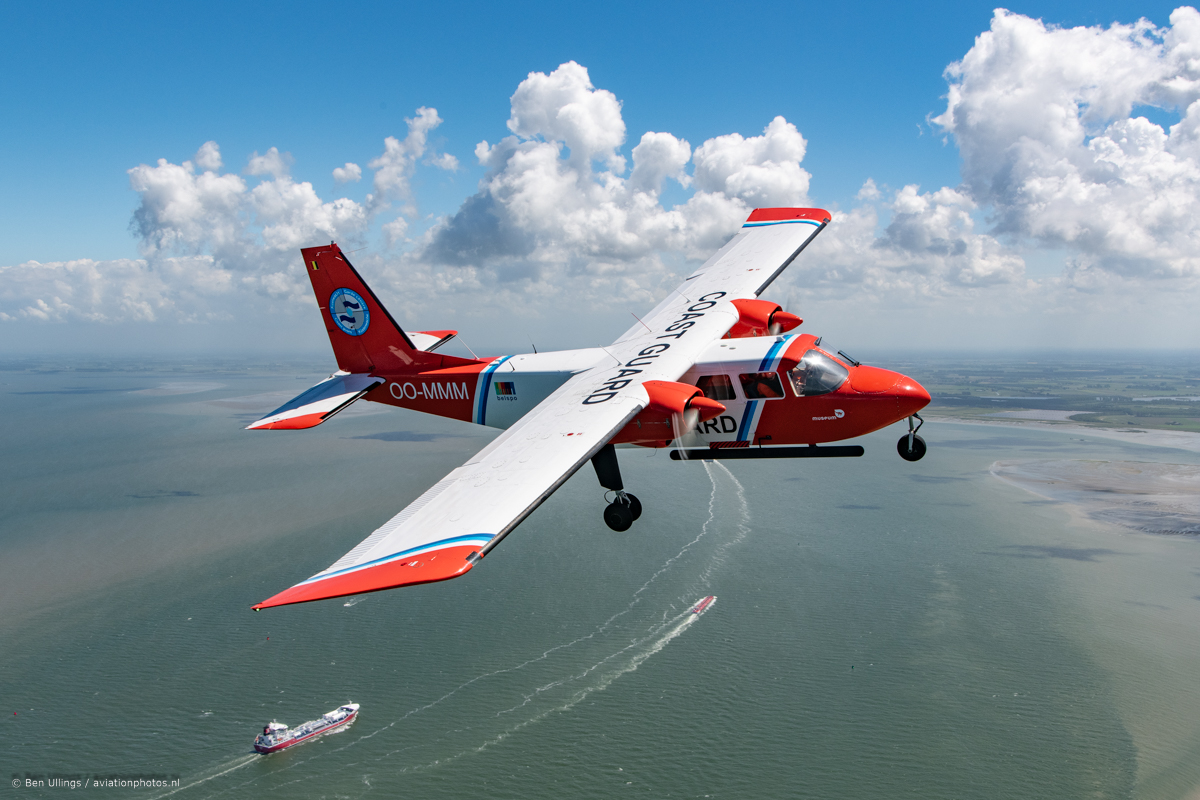
In 2023, the Institute of Natural Sciences documented 17 cases of operational discharges from ships using the Coast Guard aircraft. Suspicious sulphur and nitrogen values were measured in the smoke plumes of 24 and 42 ships. Other activities included surveillance of oil and gas installations, marine mammal counts, and broader maritime surveillance for the Coast Guard.
Overview of surveillance flights
A total of 244 flight hours were performed over the North Sea in 2023 as part of the national aerial surveillance programme. This programme is organised by the Scientific Service MUMM (Management Unit of the Mathematical Model of the North Sea) of the Institute of Natural Sciences, in collaboration with the Ministry of Defence.
Most of the flight hours were for national flights (221 hours):
208 hours in the context of the Belgian Coast Guard:
- 164 hours for pollution control, divided equally between the detection of discharges of oil, other harmful substances and garbage (MARPOL Annex I, II and V respectively) and the monitoring of sulfur and nitrogen emissions from ships (enforcement of MARPOL Annex VI);
- 39 hours for fishery control, on behalf of and in cooperation with the Flemish Fishery Inspection Services;
- 3 hours ‘on call’, during which flights were activated in response to specific alerts, namely for the verification of pollution near the windmill parcs and after the collision of two vessels;
- 2 hours in the framework of a pollution combating exercise.
13 hours for marine mammal monitoring.
In addition, 23 hours were dedicated to international flights in the framework of the Bonn Agreement, namely for a 'Tour d'Horizon' mission to monitor drilling platforms in the North Sea.
Discharges at sea
There were no accidental spills from ships in 2023. On the 10th of October, the Coast Guard Aircraft was requested to verify any pollution after the collision of two vessels in the Westhinder Anchorage. Only material damage was observed on scene.
On the other side, 4 operational oil spills were observed last year (more detail here). Although this is the largest number in the past 5 years, the downward trend of the past 30 years remains standing (see graph).
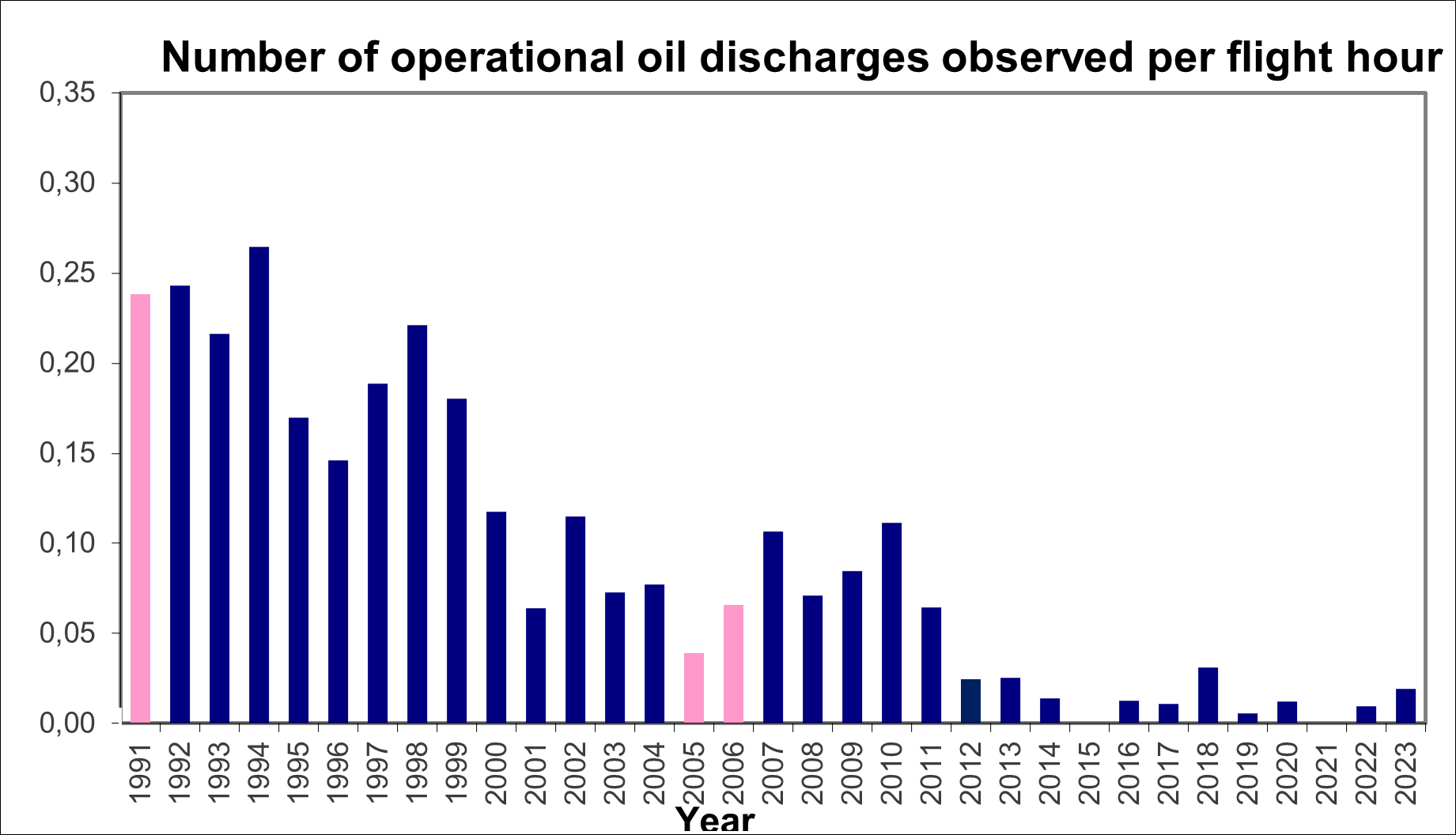
In 2023, no violations against Annex V of the MARPOL Convention concerning the discharge of solid waste from ships, including rubbish, fishing nets and solid cargo residues, were observed. However, no less than 13 cases of operational pollutions with noxious liquid substances other than oil (MARPOL Annex II) were observed. Of these 13 observations, 6 could be linked to a ship.
In 3 cases the discharged substance was FAME (fatty acid methyl ester), in the other cases the discharged substance consisted of aniline, sunflower oil and palm oil derivates. In one case, an official report was issued by the MUMM officers on board the aircraft, as one of the discharge rules for MARPOL Annex II was not met, which stipulates that such discharges must occur where the water is deeper than 25 meters. In the remaining cases, the competent port state control authorities were informed for further follow-up and investigation.
The discharge of harmful liquid substances other than oil is still a common problem, which, as reported in previous years, even appears to be on the rise (see graph below). Not only Belgium, but also other North Sea countries are noticing this increasing trend. However, the fact that these discharges often have a legal character does not alter the fact that they, to varying degrees of severity, can have a negative impact on the marine environment. It is important that coastal states continue to monitor these discharges, as this can identify problems at sea and provide an incentive to adapt, when necessary, current legislation.
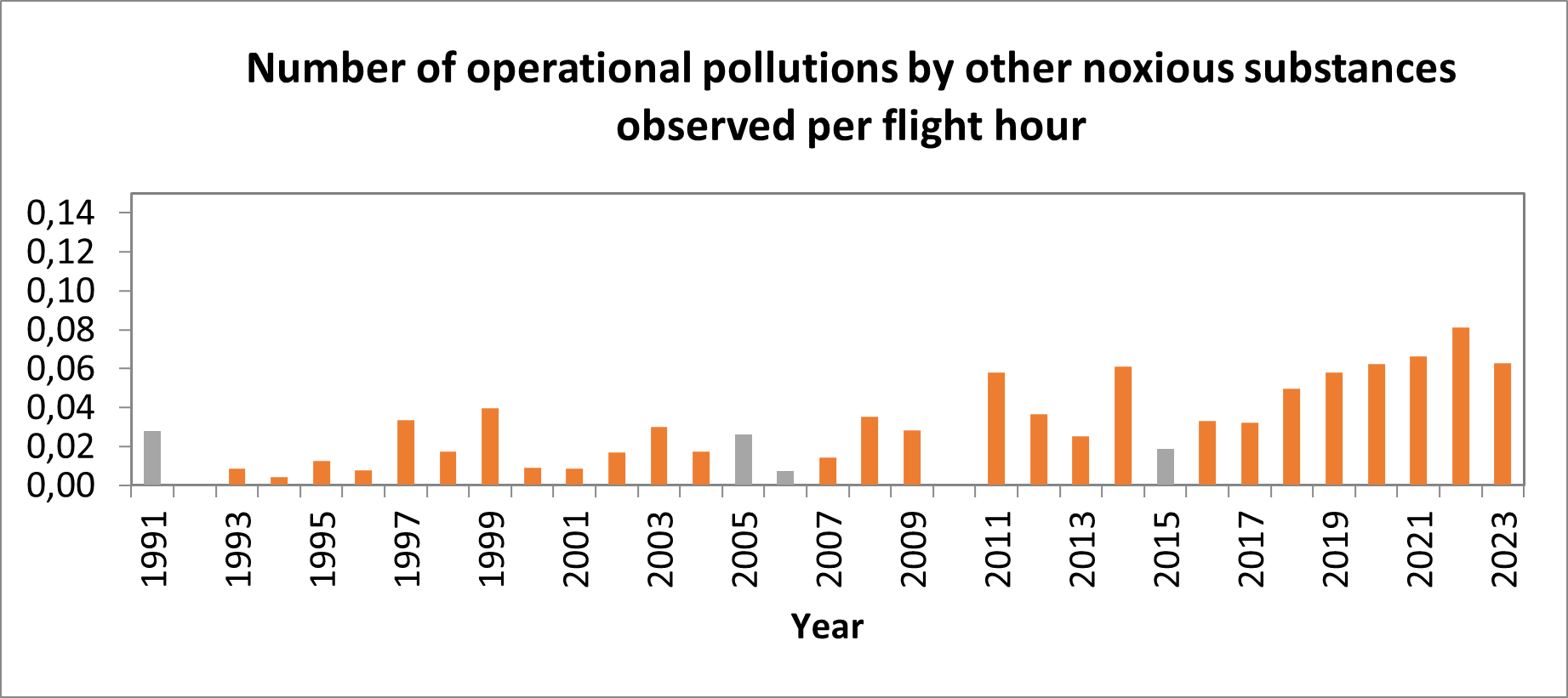
Oil pollution in ports
On the 14th of December, an oil spill was observed in the port of Antwerp. This involved a historical pollution of oil released from the subsoil. This can occur for example during excavation or dredging works. At the moment of observation, an anti-pollution vessel was already trying to recover the oil.
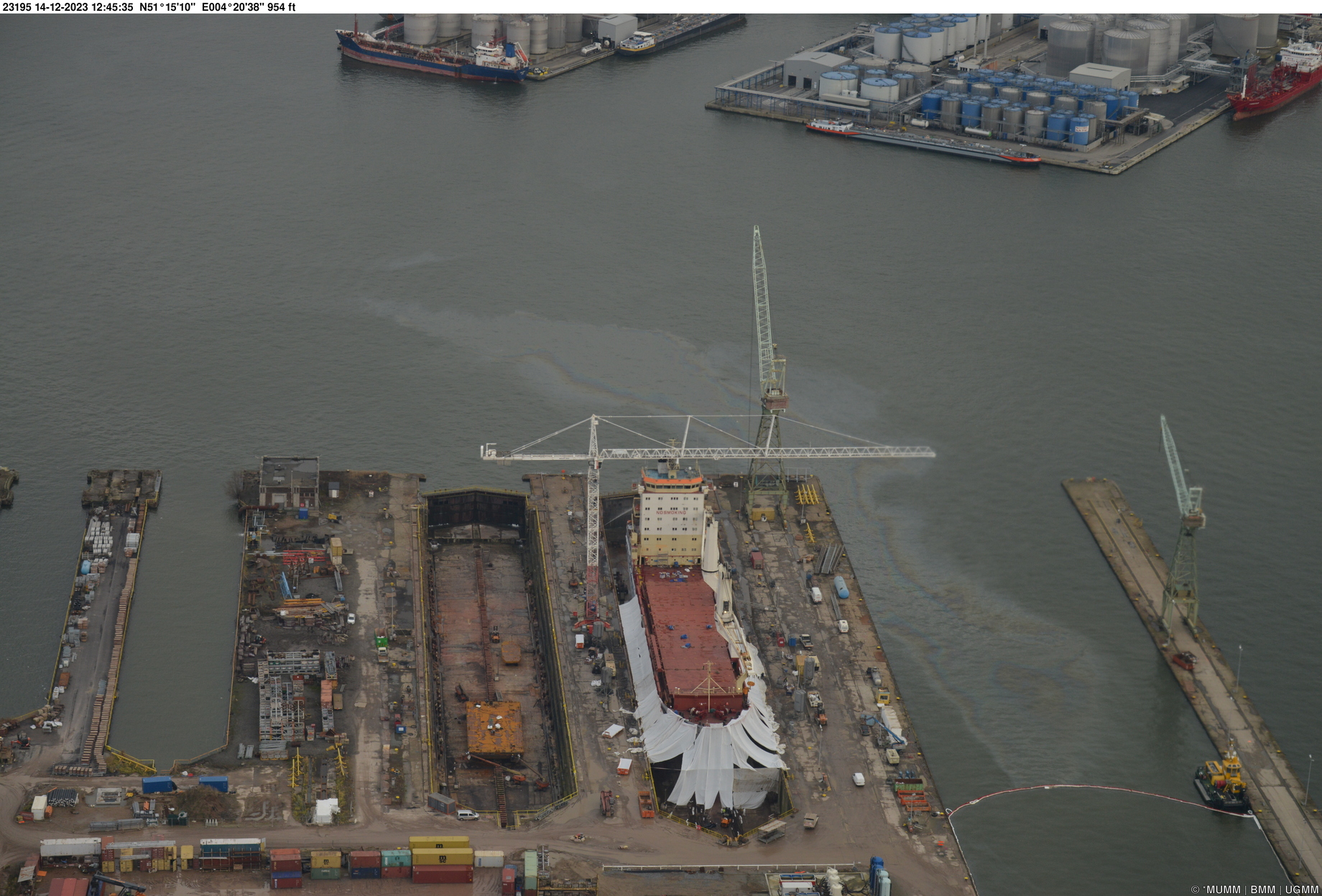
Monitoring of sulphur and nitrogen emissions
By using a sniffer sensor, the Coast Guard aircraft can measure pollutants in ship emissions at sea, and our country is known as a pioneer in the international fight against air pollution from ships.
The measurement of sulphur emissions has already been part of the programme since 2016. In order to monitor the strict sulphur limits that apply to ship fuel in the North Sea Emission Control Area, 59 sniffer flights (for a total of 79,7 hours) were carried out by the aircraft in 2023 over the Belgian monitoring area. Of the 902 ships whose emissions were measured, 24 had a suspiciously high sulphur content. These ships were duly reported to the relevant maritime inspection services and were subsequently inspected on shore.
Thanks to the successful integration of a NOx sensor in 2020, the aircraft can also measure the concentration of nitrogen compounds (NOx) in the exhaust plumes of ships in order to monitor and enforce the stricter limits that apply from 1 January 2021 in the North Sea Emission Control Area. Belgium has thus become the first country ready to monitor these stricter restrictions. Of the 902 ships for which nitrogen emissions were monitored in 2023, 42 suspicious values were reported.
Since 2021, a new sensor has been added to the sniffer set-up, namely the black carbon sensor. This sensor measures the amount of black carbon in the exhaust plumes of ships, which is a measure for the soot concentration. The soot concentration of 377 ships was measured in 2023. When exceptionally high soot concentrations are measured, the competent maritime port authorities are asked to take a sample of the fuel used. In 2024, these fuel samples will be analysed by the Institute of Natural Sciences.
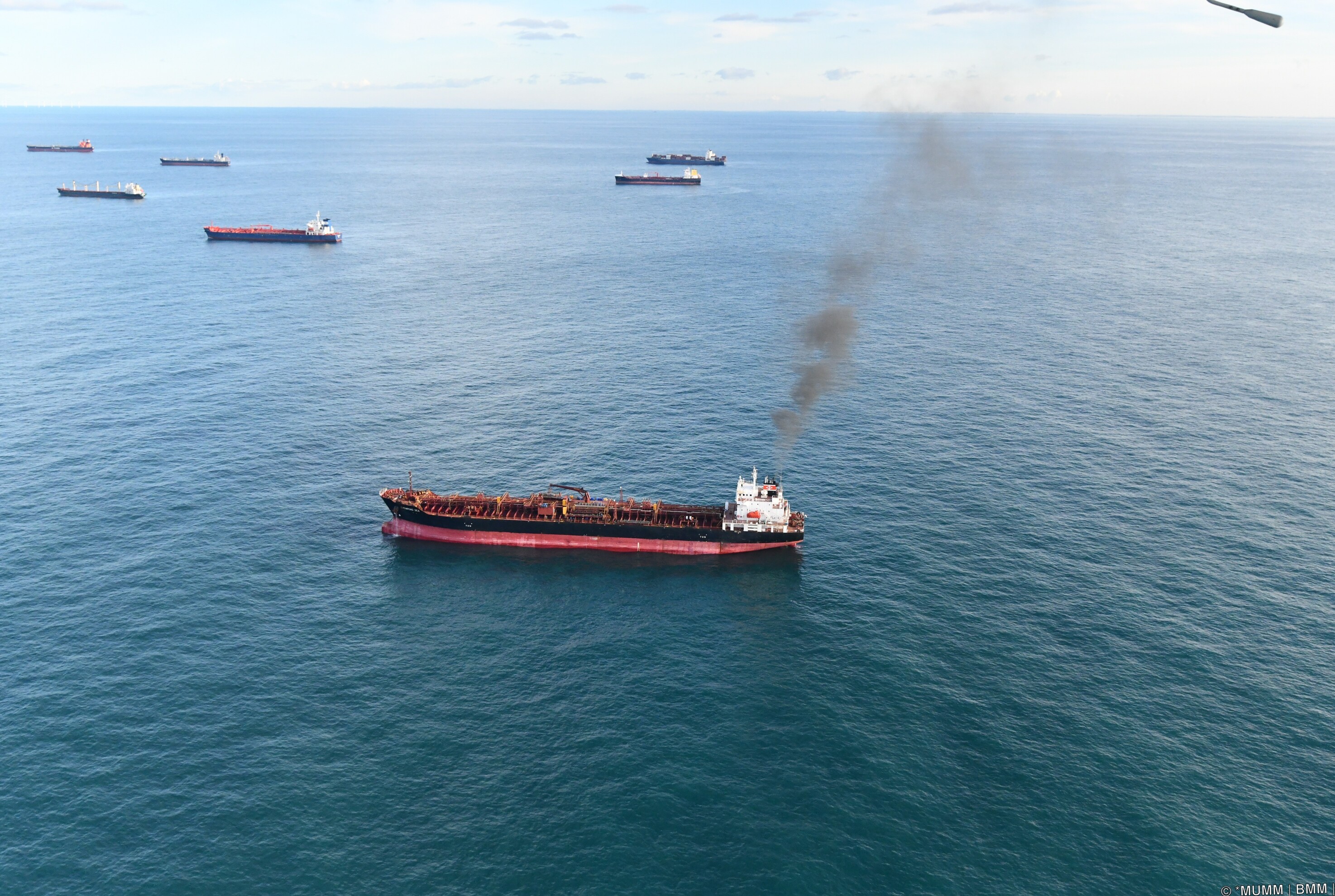
International ‘Tour d’Horizon’ mission
In July 2023, the surveillance aircraft carried out the annual international TdH mission under the Bonn Agreement. During this mission marine pollution from oil rigs and gas installations are reported in the central part of the North Sea (in Dutch, Danish, British and Norwegian offshore waters).
A total of 30 oil spills were detected, the second highest number since the start of the Belgian participation to the yearly mission in 1991. 28 of these could be linked to oil rigs. All these observations were systematically reported to the competent coastal State for further follow-up, in accordance with international procedures.
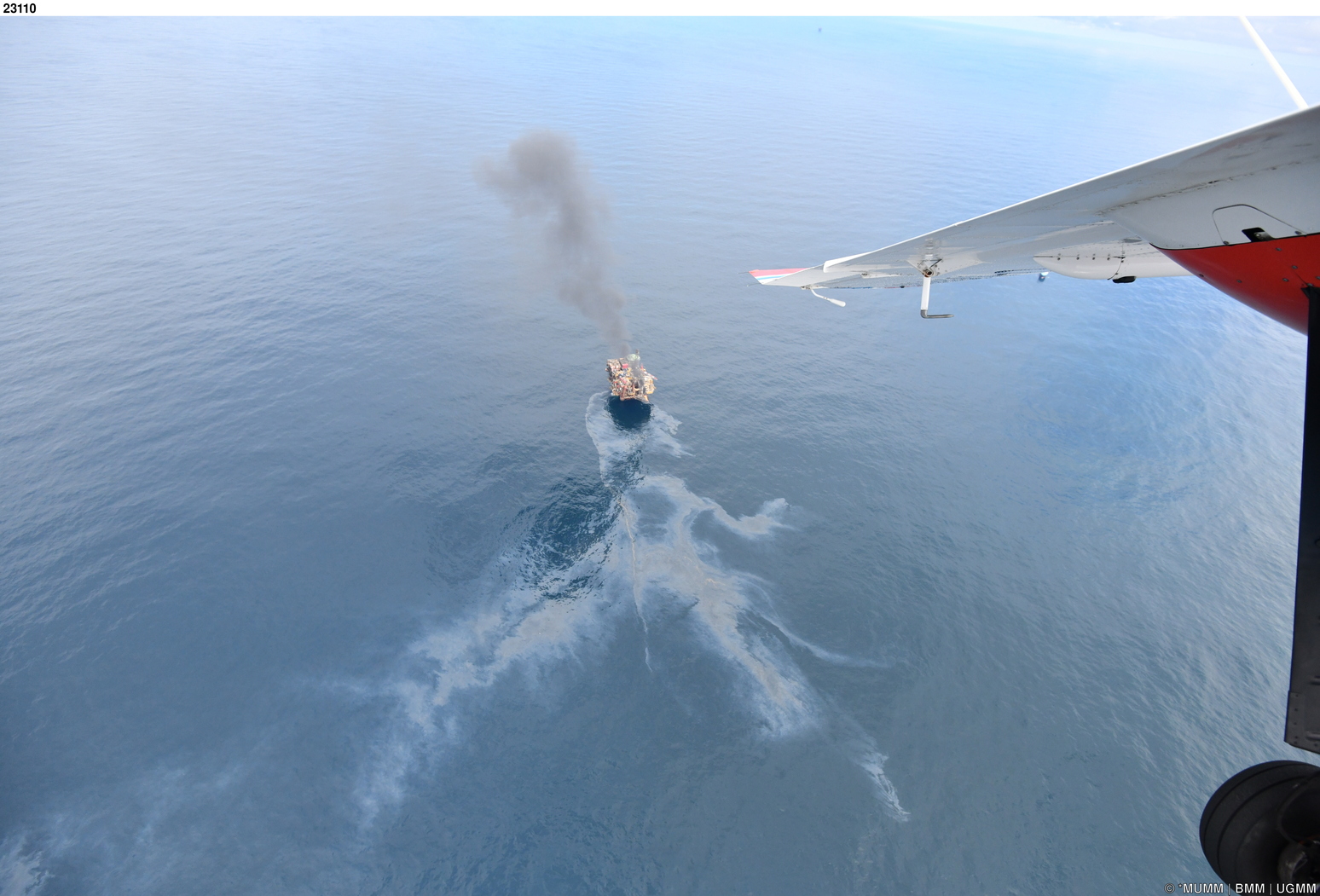
During this mission, the crew had the privilege of observing a pod of killer whales in Norwegian waters.
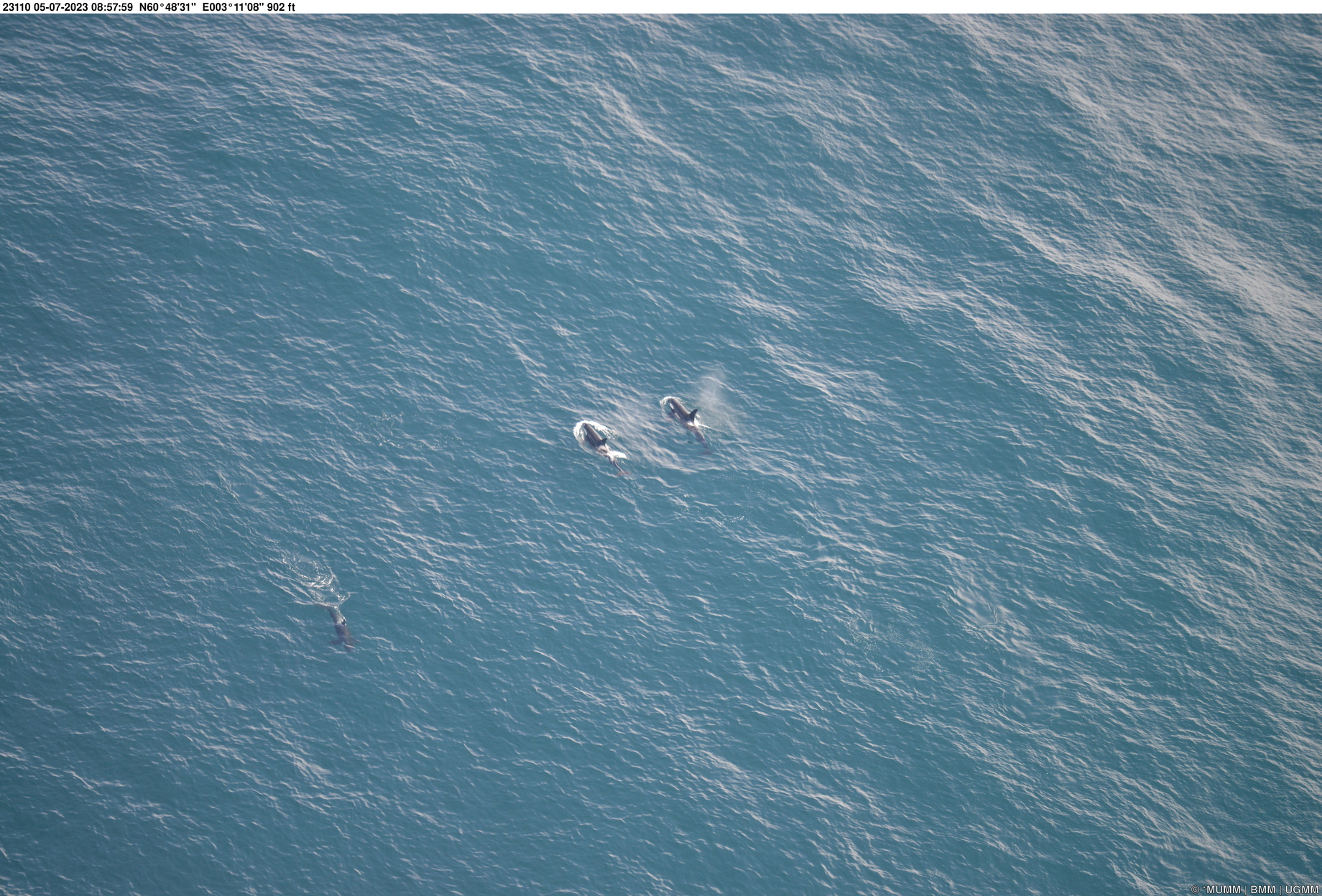
Monitoring of marine mammals
In 2023, the Institute of Natural Sciences conducted aerial marine mammals surveys in April, June and September. Respectively, 282, 32 and 55 harbour porpoises were observed along the flown transects. That are a lot of harbour porpoises for the Belgian waters: over 14.700 in April, 1.400 in June and over 2.500 in September. To a lower extent – but still quite frequently – also seals were observed, respectively 2, 10 and 30.
Extended maritime surveillance
Within the framework of the Belgian Coast Guard, the surveillance aircraft also contributed to broader missions of enforcement of maritime regulations and safety at sea.
As such, 15 ships were observed without AIS in 2023, an automatic identification system that, among other things, helps to avoid collisions. The majority (93%) were fishing vessels. The figures of 2023 confirm the increasing trend observed in the recent years, from the moment fishing vessels have been obliged to sail with AIS (in 2020).
In addition, 53 navigational violations were observed in the traffic separation scheme (“TSS”) in and nearby the Belgian waters. This is also a significant increase and mainly concerns vessels sailing in the opposite direction ("ghost sailing") or dropping anchor in one of the shipping lanes. These observations were systematically reported to the Directorate-General for Shipping (FPS Mobility and Transport) for follow-up. In view of the increasing number of violations and the consequent increased risk of collisions, the Directorate-General for Shipping has been carrying out the necessary legal follow-up on this subject since January 2023.
Finally, 3 offenders who entered prohibited areas were also reported to the competent authorities. This is significantly less than the figures of previous years. A possible explanation is that the introduction of closed areas for shipping, such as the aquaculture farm (sea farm) off the coast of Nieuwpoort and the calibration area for scientific instruments (near Ostend) have already been established in the seagoing fleet.
